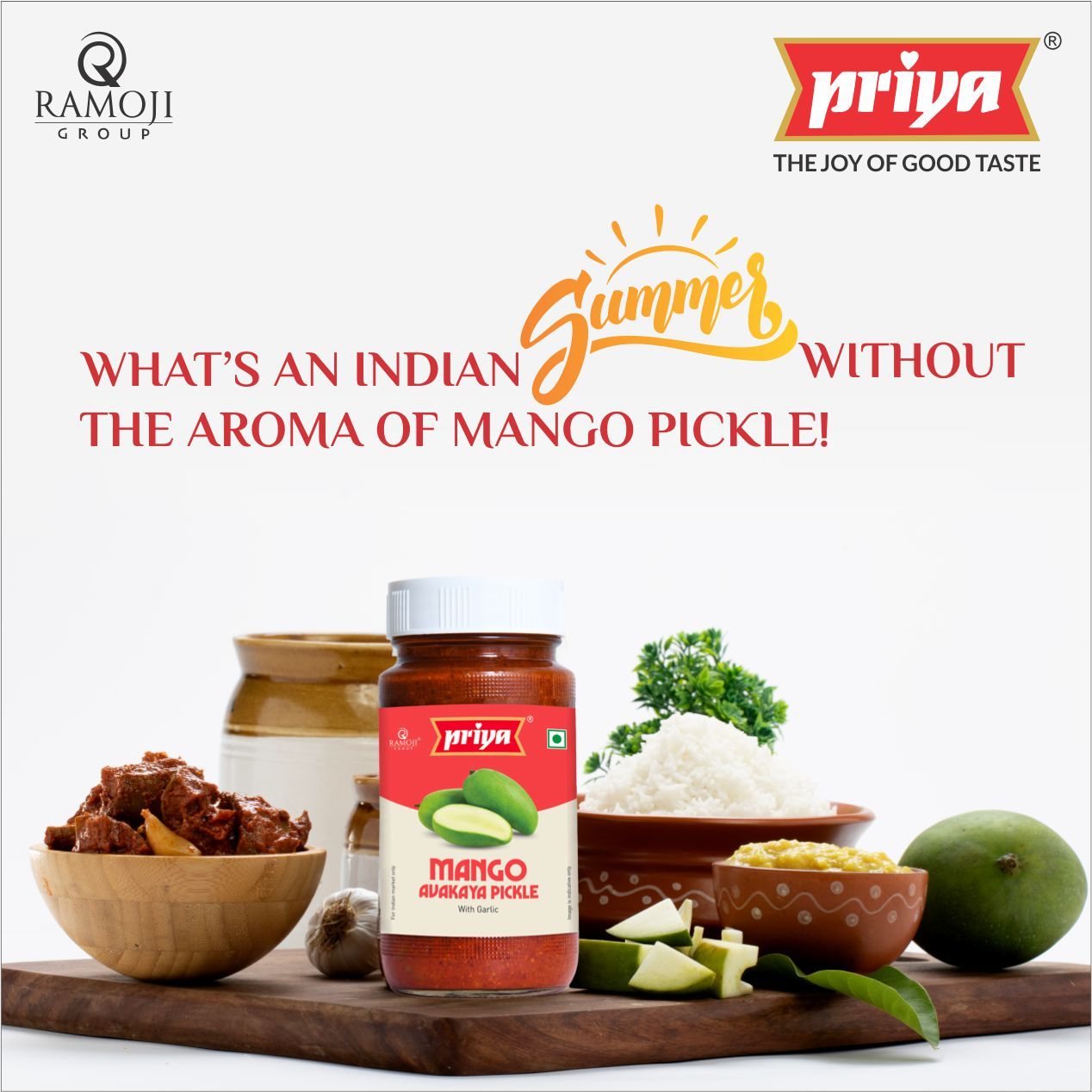
What’s an Indian Summer without The Aroma of Mango Pickle!
It’s Summer. The season of lazy afternoons, family gatherings, childhood innocence, and…mangoes! The king of fruits, loved equally raw or ripe.
Despite the infamous heat of Indian summers, it is hands down, the most-awaited season of all, by young and old alike. It’s after all the time for making that universally-liked condiment - Mango Pickle! In not just one, but many avatars.
Here’s a typical scenario that plays out in most Indian homes on a designated bright summer day: Father sets out to the market with his mother’s instructions ringing clearly in his mind - select only the firmest, sourest raw mangoes. Without an iota of doubt, grandma is in charge, and everyone follows her instructions to the t. Experience counts, doesn’t it?
Youngsters are given the relatively easier task of washing and drying the mangoes, while father is responsible for cutting them into bite-sized pieces. The atmosphere is charged with the aroma of spices and oil being mixed in just the right proportion by ma under the hawk-eyed supervision of grandma. The mango pieces then go into the spice-oil mix and stored carefully in sun-dried ‘bharanis’ or porcelain jars. No one can touch or move them until grandma declares the pickle ready for consumption, and distribution to friends and family! Yet, kids, raiding the pantry - during the afternoon when elders take their well-earned siesta - with the hope of a juicy piece of pickled mango, is quite the common sight.
An unfailingly adhered to tradition on the pickle-making day, is grandma making roundels of hot rice, ghee and the pickle gravy sticking to the vessel, and feeding them with pure love to her entire family. Undoubtedly, the sound of easy laughter and banter is a special ingredient that adds to the nostalgic taste of the traditional Indian mango pickle.
For Indians, the mango pickle is not just a food item, but a link to a glorious past and culinary culture. It is a reminder of ancestors who had passed on their traditions and values for generations. It is a reminder that no matter how much time had passed, their traditions and memories would always be preserved with love and respect. Grandma's pickle is a lasting symbol of every family's love, unity, and heritage.
Clearly, the pickle yields incredibly powerful magic in any true-blue Indian household. That unassuming jar/bottle of pickle on the dining table is a saviour - be it at fussy, boring, innovative, or lazy mealtimes.
A typically traditional Indian meal is never complete without an assortment of two-three pickles – sour, spicy or sweet – to add some tongue-tickling, tangy zest to the food. For some, a piece of their fave pickle is all that it takes to make a full, satisfying meal! Who needs a main course??
Before the off-the-shelf, readymade pickles became a popular option, ladies in every household took pride in making their own supply of pickles, to last them anywhere from three months to a year.
Since fast foods hadn’t as yet made an appearance as a quick-fix solution for sudden bouts of hunger, pickles were the next best thing. All you needed to do was grease a paratha or a roti with the pickle gravy, stack the pieces separately to bite into, and your delicious snack was ready.
The ingredients of an Indian mango pickle are carefully chosen - to add taste, as well as nutrition. The mango pickle is a rich source of Vitamin A, C potassium, antioxidants, nutrients, minerals such as iron, calcium and much more, making it not just a tasty but a healthy choice too.
Pickling - or preserving foods in vinegar, brine or a similar solution - is one of the oldest methods of food preservation. Although the exact origins of pickles are unknown, archaeologists believe ancient Mesopotamians pickled foods as far back as 2400 B.C. Queen Cleopatra of Egypt credited the pickles in her diet for her health and beauty.
Pickles were a regular part of the diet of soldiers in Julius Caesar’s armies to keep them fit, healthy and strong. As intrepid explorers, both Christopher Columbus and Amerigo Vespucci, believed pickled foods were the best and safest option for sailors on long voyages.
Closer home, the variety, range and taste of Indian pickles is as diverse and endless as Indian cuisine itself, from sweet and sour, tangy, or just plain spicy. Telugu pickles are far more spicy and tangy, compared to pickles from other parts of the country.
With life moving into the fast lane, today, it is not possible for every household to make its own pickle to suffice for the whole year. Also, the new generation demands variety on the dining table.
This is where traditional brands like Priya Foods come to the rescue valiantly. Their pickles are
a faithful recreation of the traditional, time-honoured recipes of mothers and grandmothers from the olden days. Be it Mango Avakaya, Cut Mango pickle or Mango Thokku, each of their mango pickles makes sure your every meal is instantly perked up with the genuine and authentic taste of home. In keeping with the modern lifestyle, these pickles are available in stores, on the Priya Foods website, and on online marketplaces like Amazon. So laying your hands on one is practically effortless.
Go ahead, bring home the pickle(s) of your choice, and time travel down the food nostalgia trail. Bon Appetit!
Share


